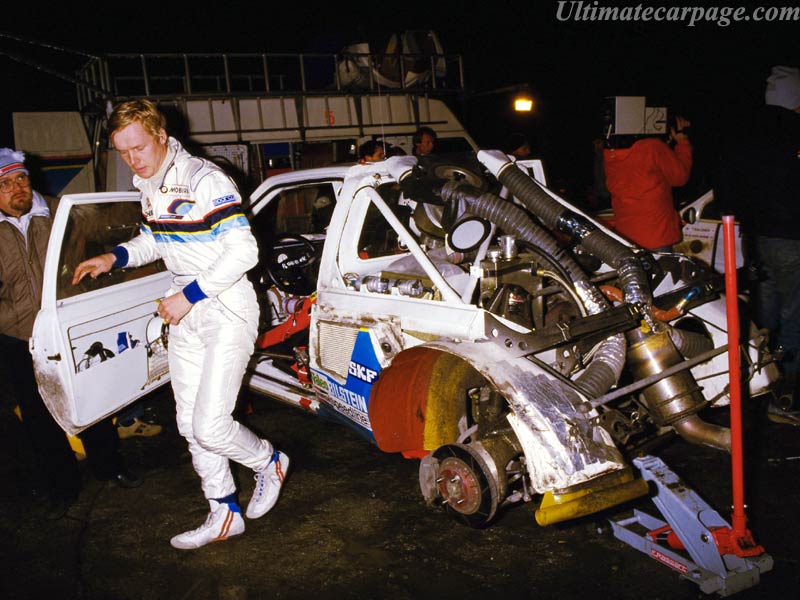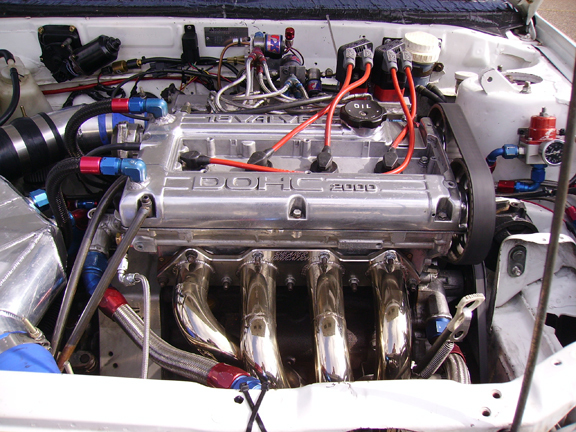Results 21 to 30 of 42
Thread: Landings
-
17th December 2007, 21:08 #21Senior Member

- Join Date
- Nov 2005
- Posts
- 591
- Like
- 0
- Liked 0 Times in 0 Posts
Keep thinking Daniel, I think you are wrong this time, I remember reading one of their engineers comments on this, I'll try to find the reference for it over the holidays, the engine rotation was certainly thought to be the culprit, the revs going up or down severly would alter the angle, from memory the planned balance shafts to elimate the problem but I'm not sure if this happened on the E2 or was planned, I'll see what I can find on this Originally Posted by Daniel
Deep down I'm a sound bloke!
Originally Posted by Daniel
Deep down I'm a sound bloke!
-
17th December 2007, 22:26 #22Senior Member

- Join Date
- Feb 2001
- Location
- On the Welsh Riviera
- Posts
- 38,844
- Like
- 2
- Liked 3 Times in 3 Posts
As I said. Think about the physics. At the end of the day the crank weighs a few kg's. Think of how much energy is being put through the diffs, wheels, driveshafts and so on. All parts that you can't reverse the rotation of. Originally Posted by cut the b.s.
Originally Posted by cut the b.s.
The main things that help a car fly are weight distribution and good aerodynamics. Remember Petter's flight (very 205 T16 Evo 1 like!) in Finland after losing the rear wing.
Plus it's all BS because a standard rotation engine rotates anti-clockwise right? Well the engine is mounted with the flywheel facing the left side of the car when viewed from the back so according to your theory gassing it will make the crank want to stay still and the car will want to go clockwise which in a 205 would raise the nose which is what you want.
Dirt bike. Flywheel on the left when viewed from behind

205 T16

As you can see the flywheel is on the left of the car on both the bike and the 205 T16 therefore the gyroscopic effect in both the bike and car is acting in the same way.
I never stop thinking. I do remember something about the Evo having it's engine flipped but tbh I think that was more to do with it's roots as a RHD road car and the fact that the group A and WRC versions are LHD so packaging is easier if you rotate the engine.Rule 1 of the forum, always accuse anyone who disagrees with you of bias.I would say that though.
-
17th December 2007, 22:45 #23Senior Member

- Join Date
- Feb 2001
- Location
- On the Welsh Riviera
- Posts
- 38,844
- Like
- 2
- Liked 3 Times in 3 Posts
For those not familiar with the dirty great bit Evo2 kit on the 205 here it is


Here's a video to show you just how well the car worked on jumps. Don't be fooled by the bodywork. The 405 T16 is just a rebodied 205 T16.
Go to about 1:30 and you'll see what effect a dirty great big wing has on a car!
http://www.youtube.com/watch?v=Ciagqfd9s04Rule 1 of the forum, always accuse anyone who disagrees with you of bias.I would say that though.
-
17th December 2007, 22:52 #24Senior Member

- Join Date
- Feb 2001
- Location
- On the Welsh Riviera
- Posts
- 38,844
- Like
- 2
- Liked 3 Times in 3 Posts
Mitsubishi Evo 2 Engine bay with flywheel facing right.

Evo 6 with flywheel facing left

I guess there is some sort of gyroscopic effect involved but I suspect the main reason for rotating the engine was more in regards to packaging for the steering, brakes and so on as the car was built to be RHD but was rallied in LHD form.Rule 1 of the forum, always accuse anyone who disagrees with you of bias.I would say that though.
-
17th December 2007, 23:30 #25Senior Member

- Join Date
- Apr 2004
- Location
- Lismore, NSW
- Posts
- 1,933
- Like
- 8
- Liked 78 Times in 27 Posts
It is not a matter of pure mass. It is about the forces imparted on those masses. Because the crankshaft is directly connected to the pistons, the forces are immense & with the highest energy that can possibly be. Unlike the wheels & everything else behind the engine as energy is lost in the gearbox & drive train.
So you must keep in mind the force applied to the crank from the pistons compared to force applied to the wheels from the drive train.
Daniel, a crankshaft may only weigh a few kilos but the torque it is producing & the centrifugal force would allow it to spin the engine, if the crank was kept still. But because the engine is fixed on it's mounts, when the car is airborne, the whole vehicle now wants to rotate around the crank.
Think about a helicopter when the tail rotor has failed. The torque rotation is extremely dangerous & uncontrollable and in small helicopter, using a crank much smaller than a rally cars. Another example, look at the big massive drag bikes, the rider has to physically lean off to the opposite side of the inline crankshafts rotation, just to keep the vehicle travelling in a straight line & if the wheels left the ground it results in a big accident as the bike is spun off from underneath the rider.Happiness is using the side windows more than the windscreen
In reply to being asked what 240Kph on Watagans Road was like:-
\"Wait till I check my pants, I didn\'t know whether to sh#t myself or orgasm!!!\"
-
17th December 2007, 23:39 #26Senior Member

- Join Date
- Feb 2001
- Location
- On the Welsh Riviera
- Posts
- 38,844
- Like
- 2
- Liked 3 Times in 3 Posts
I wasn't saying it would have little effect Originally Posted by Livewireshock
Originally Posted by Livewireshock
 I merely said that if it was operating in the opposite direction to the rest of the spinning bits on the car that the disadvantage would be somewhat cancelled out.
I merely said that if it was operating in the opposite direction to the rest of the spinning bits on the car that the disadvantage would be somewhat cancelled out.
Anyway we've established that unless for some strange reason Peugeot decided to put a reverse rotation engine in the Evo1 205 (why would they?) that the statement at least for the 205 is seemingly no more than a myth and the better jumping of the Evo 2 was better explained by the huuuuuge aero kit.Rule 1 of the forum, always accuse anyone who disagrees with you of bias.I would say that though.
-
18th December 2007, 06:59 #27Senior Member

- Join Date
- Oct 2000
- Posts
- 8,349
- Like
- 205
- Liked 657 Times in 352 Posts
Crap. If Audi was able to get their front-engined quattro down to almost fifty-fifty weight balance with S1 by mid-1985, do you really think that Peugeot's purpose-built 205T16 would not have been at ideal distribution a little more than year before? I don't have access to literature now but Peugeot's only weight distribution problem was not front-rear but slight left-right imbalance (because engine sat little bit on the one side, due to transfer box). Originally Posted by Daniel
Originally Posted by Daniel
-
18th December 2007, 08:10 #28Senior Member

- Join Date
- Feb 2001
- Location
- On the Welsh Riviera
- Posts
- 38,844
- Like
- 2
- Liked 3 Times in 3 Posts
Someone else must have been posting as me yesterday. I meant the main problem was the aero Originally Posted by jonkka
Originally Posted by jonkka
 Rule 1 of the forum, always accuse anyone who disagrees with you of bias.I would say that though.
Rule 1 of the forum, always accuse anyone who disagrees with you of bias.I would say that though.
-
18th December 2007, 13:03 #29Senior Member

- Join Date
- Sep 2003
- Posts
- 506
- Like
- 0
- Liked 0 Times in 0 Posts
Balls! Originally Posted by Daniel
Originally Posted by Daniel
Mitsubishi were selling the LHD only TEL in the US from 1989, and they also got the reversed engine along with the EVO, so brakes/packaging whatever was not the problem.
Could it possibly be that the great Daniel does not know every little thing about rallying after all?
And FYI the Aero package was the smallest part of the 205 T16 EVO 2 upgrades.I will be rich, as soon as I invent a machine that can punch a man in the face over the internet.
-
18th December 2007, 13:23 #30Senior Member

- Join Date
- Feb 2001
- Location
- On the Welsh Riviera
- Posts
- 38,844
- Like
- 2
- Liked 3 Times in 3 Posts
Could it be that your gherkin attacked my lollipop!
The fact of the matter is that the 205 had it's engine the "right" way around from the start....Rule 1 of the forum, always accuse anyone who disagrees with you of bias.I would say that though.



 Reply With Quote
Reply With Quote









Turbine blade.
What's the first thing to come to...